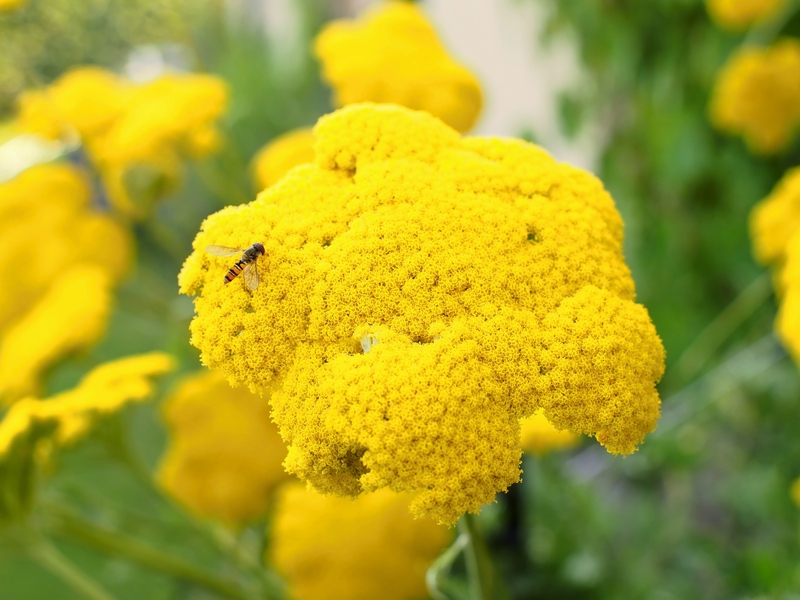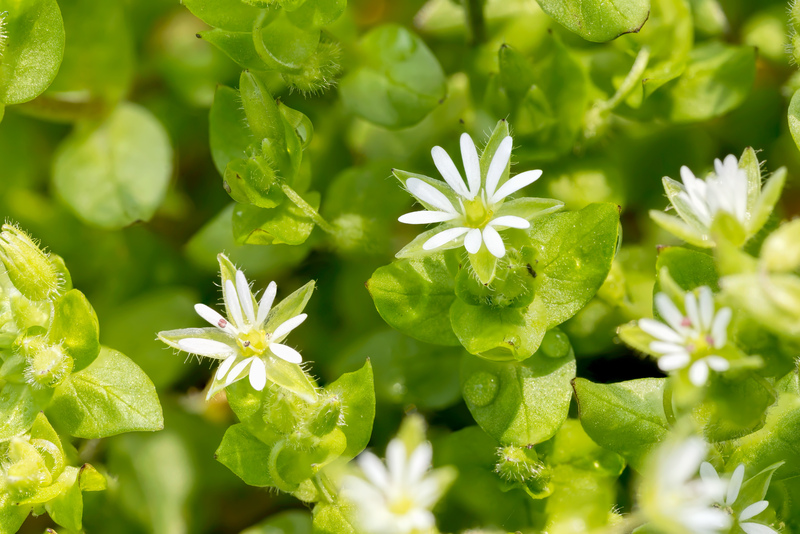Invent a Wonder-Filled Kid's Garden Project
Posted on 02/07/2025
Invent a Wonder-Filled Kid's Garden Project: Cultivating Imagination and Growth
Are you searching for an inventive children's gardening project that will spark curiosity, encourage learning, and get little hands digging in the dirt? This comprehensive guide introduces a wonder-filled garden activity for kids--a creative and interactive venture designed not only to beautify your backyard but also to inspire happy, healthy, lifelong gardeners. Whether you're a parent, teacher, or community leader, discover how to invent a kid's garden experience rich with discovery and fun!
Why Invent Garden Projects for Children?
A hands-on wonder garden project for kids is more than just planting seeds--it's about cultivating joy, responsibility, and imagination. Children's garden activities:
- Build early science skills through observation and experimentation
- Strengthen fine motor skills and hand-eye coordination
- Foster a lifelong appreciation for nature and the environment
- Boost mental wellness with outdoor play and mindfulness
- Support teamwork, communication, and planning skills
With the right project, children transform into nature detectives, wildlife artists, and budding eco-engineers, all while cultivating their own vibrant patch of earth.

Inventing the Ultimate Kid's Wonder Garden: The "Mystery Haven" Concept
Ready to invent a remarkable garden adventure for children? Let's build the Mystery Haven: a themed garden brimming with sensory features, secret hideaways, discovery tools, and wildlife-friendly elements. Below, you'll find step-by-step instructions, plant ideas, activities, and tips for adapting this project to any outdoor or indoor space.
Elements of a Wonder-Filled Kid's Garden Project
- Sensory plantings: Fragrant, colorful, and textural blooms to delight every sense
- Living tunnels or hideouts: Wigwams, tepees, or forts crafted from climbing green plants
- Exploration stations: Areas for magnifying, digging, and wildlife watching
- Creative zones: Spots for art, storytelling, and fairy or dinosaur gardens
- Magical features: Hidden messages, painted rocks, or a weather station
Step-by-Step Guide: How to Invent Your Own Magical Kid's Garden Adventure
Step 1: Enlist Your Tiny Garden Designers
*Involving children from the very beginning is key.* Gather your little ones and ask:
- Which animals, colors, or flowers excite you?
- Do you want a hiding spot or a fairy village?
- Would you like to grow food, flowers, or wild plants?
Let kids draw garden plans or use toys to map out their dream space. This builds excitement and ownership!
Step 2: Choose a Location and Layout
- If you have outdoor space, select a sunny and safe spot near your home or school.
- No yard? Use pots, window boxes, or grow bags for a patio or balcony garden.
- For indoor gardening, repurpose old bins or buckets with drainage holes and LED grow lights.
Divide the area into themed "zones," such as a planting patch, secret tunnel, and discovery corner.
Step 3: Select Sensory, Kid-Friendly Plants
- Scented picks: lavender, mint, lemon balm, basil, scented geraniums
- Colorful blooms: marigolds, nasturtiums, sunflowers, calendula, zinnias
- Tasty treats: cherry tomatoes, sugar snap peas, strawberries, rainbow carrots
- Fuzzy textures: lamb's ear, yarrow, ornamental grasses
- Climbing plants for tunnels: pole beans, sweet peas, morning glories, cucumbers
Plant with a mix of heights, shapes, and seasons to maintain year-round wonder.
Step 4: Craft a Living Tunnel or Hideout
What could be more wonder-filled than ducking into a lush, leafy tunnel of green?
- Use bamboo poles or sturdy sticks to create a simple arch or teepee frame.
- Plant fast-growing vining seeds like pole beans or morning glories along the base.
- Encourage kids to water and guide the vines as they climb!
- Add a ground cover of soft clover or mulch for cozy lounging.
Step 5: Build Exploration Stations
Invent special "stations" for interactive sensory garden exploration:
- Bug Hotel: Stack sticks, bamboo, and pinecones in an old box to invite pollinators.
- Digging Corner: Provide shovels, buckets, and a spot for worm hunts.
- Magnifying Spot: Leave magnifiers and ID charts for examining leaves and insects.
- Weather Station: Hang a homemade wind sock, rain gauge, or pinwheel.
Step 6: Spark Creativity--Art and Imagination Zones
Every wonder-filled kid's garden project needs a touch of magic. Try these creative ideas:
- Pebble Path: Paint stones with animal footprints or secret clues.
- Fairy Village: Build fairy or dinosaur homes from twigs, shells, and leaves.
- Mud Kitchen: Set up old pots and pans for muddy "cooking" fun.
- Storytime Circle: Nestle a bench or logs among the flowers for outdoor readings.
Let kids decorate their area with wind chimes, their own plant markers, or even garden gnomes!
Step 7: Wild Friends Welcome! Encouraging Beneficial Wildlife
- Pollinator plants: Grow bee- and butterfly-friendly blooms (coneflowers, cosmos, clover).
- Bird baths or feeders: Attract songbirds and teach kids about native species.
- Bug hotels and log piles: Shelter ladybugs, beetles, and garden helpers.
Observing wild visitors adds layers of wonder and surprise to your magical children's garden.
Step 8: Keep the Exploration Going Year-Round
- Winter wonder: Dry flowers for indoor crafts, make pinecone feeders, or start seeds indoors.
- Spring sparkle: Plant new crops, watch for frogs in puddles.
- Summer discovery: Pick berries, document bugs, stage a garden picnic.
- Autumn harvest: Collect leaves, carve pumpkins, and seed next year's beds.
Helpful Tips for a Successful Wonder Garden Project
- Let kids lead: Allow children to choose plants, layout, and decorations for a true sense of pride.
- Embrace mess: Gardening is gloriously muddy--provide aprons and plenty of clean-up time!
- Encourage discovery: Don't fret if kids wander, dig up "treasures," or ask a million questions--every moment is a learning opportunity.
- Celebrate successes: Pick the first tomato, spot the first bee, or host a mini "garden show" for family and friends.
Adapting Your Garden Project: Indoors and Small Spaces
No backyard? No problem! Invent a kid's garden project using:
- Windowsill gardens: Grow herbs in jars or start microgreens in trays.
- Container towers: Stack pots to create vertical gardens bursting with color.
- Mini nature tables: Make indoor "habitats" from moss, pinecones, and succulents.
- Grow kits: Try mushroom, butterfly, or hydroponic starter kits for year-round fun.
Integrating Learning in Your Wonder-Filled Children's Garden
Science Activities
- Seed sprouting: Observe how seeds change by starting them in clear containers.
- Weather tracking: Graph rainfall, temperature, and even cloud shapes.
- Lifecycle studies: Watch butterflies or ladybugs go through metamorphosis.
Art and Storytelling
- Plant-based crafts: Press flowers, paint leaves, or make nature mobiles.
- Garden journals: Encourage daily drawing and note-taking in a special notebook.
- Story circles: Invent nature tales inspired by the garden's hidden corners.
Math and Measurement
- Measuring growth: Track plant height and create graphs each week.
- Counting seeds: Practice numbers during planting sessions.
- Comparing shapes & sizes: Group leaves, petals, or vegetables.
Benefits of Inventing a Kid's Garden Project
A wonder-filled children's garden is more than a play area--it's a classroom, therapy zone, and adventureland in one. Research shows gardening with kids:
- Improves focus and academic performance
- Reduces anxiety and increases physical activity
- Promotes environmental stewardship and healthy eating habits
- Builds family and community bonds through shared projects
Plus, every dig in the dirt plants a seed of wonder, creativity, and resilience that lasts a lifetime.
Expand the Magic: Invent Advanced Projects for Young Gardeners
- Solar-powered features: Create homemade garden lights or mini fountains with solar kits.
- Worm compost bin: Teach recycling and soil health through vermiculture.
- Herb spiral: Build a spiral bed with rocks for a culinary and sensory adventure.
- Wildlife pond: Install a shallow basin with stones for frogs and dragonflies (adult supervision required).
Let Your Imagination Bloom!
The most magical children's garden project is the one you invent together. Ask "What if?" and let creativity and curiosity guide you. Maybe your wonder garden is a pirate treasure island, a mini rainforest, or a peace garden filled with poems and wind chimes.

Inventing a Wonder-Filled Kid's Garden: Frequently Asked Questions
What age is best for a kid's wonder garden project?
Children as young as two can participate with adult help. Tailor tasks (like digging, painting, or plant selection) to match ability.
Can we do this at school or in community spaces?
Absolutely! Many schools host classroom or playground gardens. Partner with staff, parents, and kids for shared invention.
How do I keep kids interested in the garden?
Add surprises--hide painted rocks or treasure, host scavenger hunts, and rotate activities throughout the seasons for ongoing wonder.
What plants are easiest to grow in a children's wonder garden?
- Sunflowers, nasturtiums, radishes, lettuce, and snap peas are fast, rewarding, and kid-approved!
How do we make our garden eco-friendly?
- Use peat-free compost and organic seeds
- Collect rainwater in barrels
- Encourage local wildlife with native plants
Conclusion: Adventure Awaits in Your Invented Wonder Garden
Inventing a wonder-filled kid's garden project is a unique way to bring joy, learning, and natural beauty into children's lives. With curiosity as your compass and nature as your playground, every garden patch holds secrets and stories waiting to bloom. Start planning today, and watch your child's imagination and love of nature take root!
Ready to invent your own magical wonder garden? Gather your little gardeners, dream wild, and let the adventure--rich in color, discovery, and laughter--begin.

